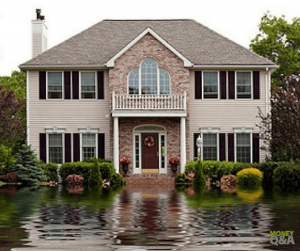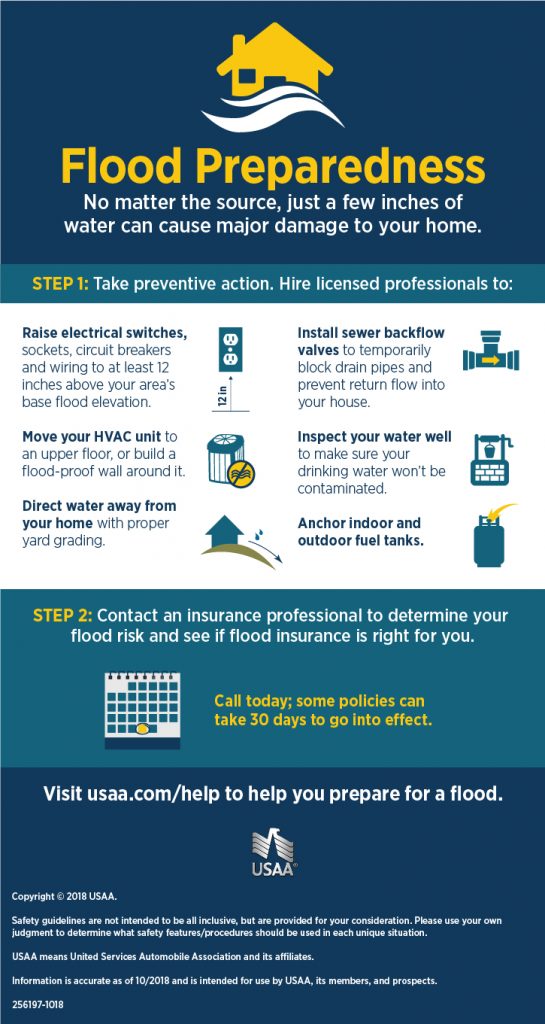
How much is flood insurance? And, do you even need flood insurance for your home or business? The answer may surprise you.
This insurance is a very beneficial type of coverage that is useful for both commercial and residential property owners. Floods can cause significant amounts of damage to any type of property, and this damage can lead to thousands of dollars in losses.
Flooding occurs more often than tornadoes, earthquakes, or hurricanes. Between 2005 and 2014, flood insurance claims averaged more than $3.5 billion per year.
The best thing to do is to take preventative action by choosing a insurance policy to have coverage before disaster strikes. This article covers this particular type of insurance, how much is flood insurance, and other common questions and concerns that property owners have regarding this type of insurance coverage.
How Much Is Flood Insurance?
There is no one set price for flood insurance that applies to each and every property owner, so there is no specific answer to this question. The National Flood Insurance Program estimates that this type of coverage costs approximately $700 per year, and this estimate is a helpful starting point.
However, this is an average or an estimate rather than a set fee that every policyholder will have to pay. The cost of insurance will vary according to a number of different factors. These factors will help you better understand how much is flood insurance.
The cost of insurance can vary significantly depending on where you live. As you may know, some areas of the country and world are much more prone to flooding than others. States that have higher risks for flooding may have higher rates for insurance.
The United States has flood zones. Even you do not live in a flood zone, you may want to consider purchasing flood insurance. According to the National Flood Insurance Program (NFIP), people outside of mapped high-risk flood areas file over 20% of all NFIP insurance claims and receive one-third of Federal Disaster Assistance for flooding.
Check Your Risk Profile
If you want highly detailed information about the costs of flood insurance, you may want to consider filling out a risk profile. These profiles are provided on the websites of insurance providers or can be found on the National Flood Insurance Program website. The profile is are similar to what you would fill out when looking for car insurance or life insurance.
You provide information about your property, your location, and other risk factors. The insurance company will use this information to generate an estimate of the costs of insurance.
Finding the cost of insurance is a fairly simple task. There are many resources that can help you find an answer that is applicable to you.
You should begin looking for flood insurance policies that are suitable for your commercial or residential property. This will ensure that your property and your possessions are fully protected in the event of a disaster. This kind of protection offers great peace of mind that cannot be beaten.
In the past 5 years, all 50 states have experienced floods or flash floods. Homeowners’ insurance does not cover flood damage.
Homeowners' insurance does not cover flood damage. #insuranceClick To TweetYour mortgage company may require you to buy insurance if your home is in a high-risk area. However, it’s a common misconception that you don’t need it if you’re in a moderate to low-risk area. you live in a Special Flood Hazard Area (SFHA) or high-risk area and have a Federally backed mortgage, your mortgage lender requires you to have flood insurance. To find your flood risk, fill out the Flood Risk Profile on the NFIP website.
Even if your mortgage company doesn’t require it, it’s always needed — for the financial risks alone. In the past five years, floods have affected all 50 states, and more than 20% of all flood claims come from areas that are considered moderate- to low-risk areas — where most of us live. Just a few inches of water from a flood can cause tens of thousands of dollars in damage. Hurricanes, winter storms, and snowmelt are common but often overlooked causes of flooding.
Federal disaster assistance is usually provided in the form of a loan that must be paid back with interest. For a $50,000 loan at 4% interest, your monthly payment would be around $240 a month or $2,880 a year for 30 years. Compare that to a $100,000 flood insurance premium, which is about $400 a year or $33 a month. That’s a small price to pay for peace of mind when your homeowners’ insurance does not cover flood damage. Insurance, Banking, and Credit Cards for military members and their eligible family members. Join USAA.
Flood Insurance Myths
How much is flood insurance and what is covered? The answers might surprise you. There are many myths out there about insurance that need to be dispelled. Below are a few myths about flood insurance that every homeowner should know.
Myth: You Have To Live In A Flood Plain
Whether you live in a flood zone or not, you can purchase insurance any time you feel that you should. As a matter of fact, if you do live in a high-risk flood zone, your insurance company will probably require that you carry flood insurance on your home as a precaution. It is even possible to purchase insurance for your possessions if you only rent your home as well.
Myth: Insurance Is Only For High Risk Areas
In recent years, many areas that have never seen much flooding have been hit hard. Since the residents’ had no insurance because it was not a high-risk area, their homes were not covered.
Always expect the unexpected and purchase flood insurance just in case tragedy strikes. It is better to pay the premiums and never use it than to not pay and lose everything.
Myth: Everything Is Covered When You Have Flood Insurance
This is not necessarily true. It is said that federal policies pay out up to $250,000 on the structure of the home. So, if you have a $400,000 home, then you are out of luck.
The cap for personal coverage on the inside of the home may only $100,000. It is possible to buy additional insurance if you already have insurance on your home, however.
Myth: Homeowners Policies Have the Insurance Built In
This is the one myth that comes back to bite many homeowners when tragedy strikes. What they don’t know is that your standard insurance policy does not cover earthquakes or floods.
You have to buy additional policies to cover these events and with the way disasters are increasing it is more than a good idea to do so. Remember, also, when you apply for flood insurance, it doesn’t take effect until 30 days after the policy is written.
Flood insurnace is typically not covered in a homeowners insurance policy; although, flood coverage is part of a USAA Renters Insurance policy. We offer insurance through the national program to cover flood damage caused by hurricanes, melting snow, rain, and other events.
I can’t stress this enough. Homeowners’ insurance does not cover flood damage.
Myth: Water Damage Is Just Water Damage
Many homeowners are under the impression that all water damage is the same. Not true. According to insurance companies, there are different kinds of water damage and different payouts as well. If your roof is blown off in a storm, that would be covered under your standard policy, not flood insurance.
This myth has come back to bite many homeowners who did not understand the ins and outs of flood insurance.
These are just a few of the myths that need to be dispelled when it comes to homeowners and their insurance. Even if you feel that your home is not at risk, it could be, so purchasing flood insurance only makes good common sense.
How much is flood insurance? How much do you have covering your home or business?


My mother just purchased this for her apartment – didn’t know you could do this – but you can. Thing is that it won’t take affect until 30 days after the policy is started. Don’t know if many know this / or are aware.